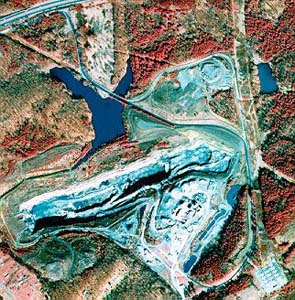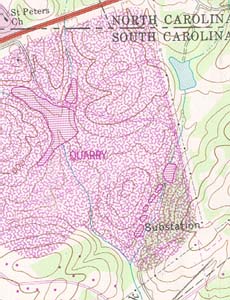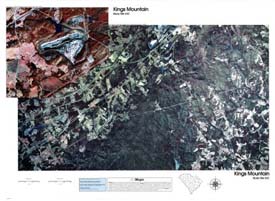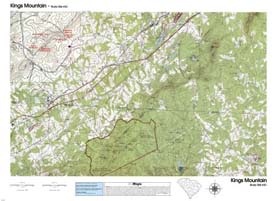 |
||||
Kings Mountain |
|
Portion of infrared aerial photograph showing an active mining site. Interstate 85 visible in upper left hand corner. |
Portion of topographic map From USGS Kings Mountain quadrangle.. |
Kings Mountain (NAPP) |
Kings Mountain (Topo) |
RationaleThe Kings Mountain Study Site provides an excellent example of how landscapes and landforms can affect historical events. When the British and American armies met at Kings Mountain during the Revolutionary War, the British forces were not used to fighting in this type of landscape, while the American troops took advantage of their knowledge of the terrain to gain a quick victory. The landscape has also figured prominently in the development of the trails and monuments which were later constructed within the national park. As the population of the Piedmont region grew larger, the Kings Mountain area became part of a national transportation route between Charlotte and Atlanta. The Kings Mountain Belt is also known for its distinctive geology and economically valuable mineral deposits. Several surface mining sites illustrate both the benefits and potential environmental hazards associated with resource extraction. Many of the inactive mines have been reclaimed, although some have not, providing a comparative framework for analyzing and discussing a variety of environmental issues. |
Background InformationDescription of Landforms
Influence of Topography on Historical Events and Cultural Trends
Natural Resources, Land Use, and Environmental Concerns
|




